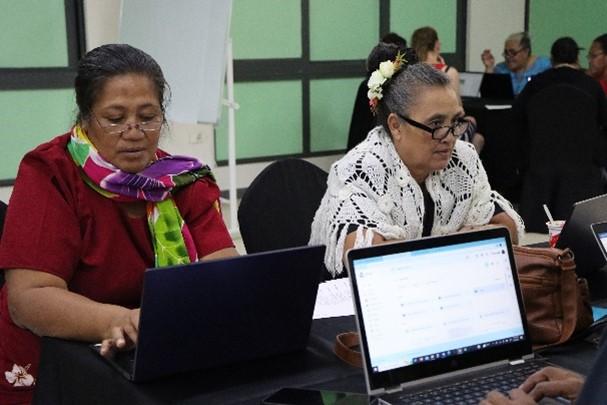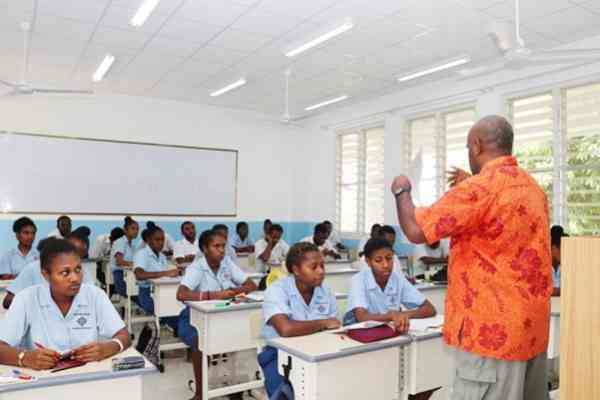(contenu disponible en anglais uniquement)
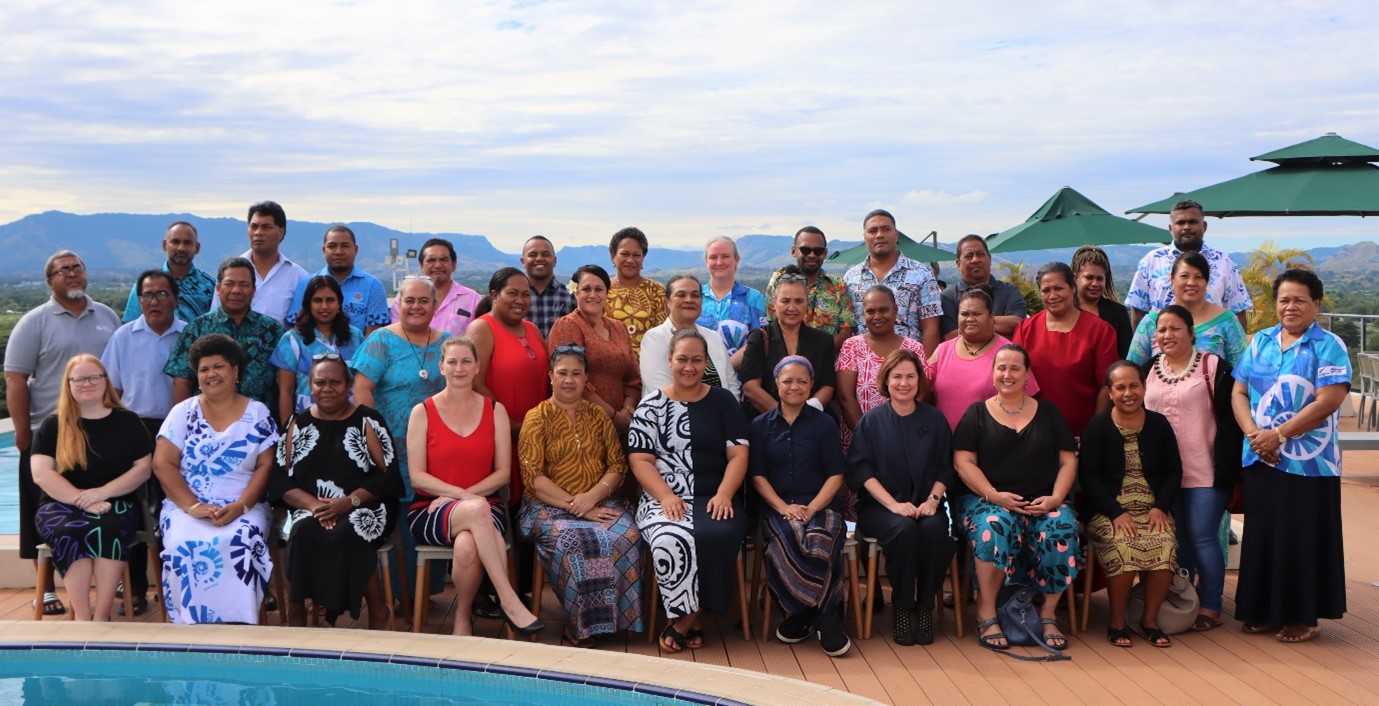
The Pacific Community’s (SPC) Educational Quality and Assessment Programme (EQAP) worked with its member countries to update the Regional Benchmarks for Literacy and Numeracy which are used to analyse the Pacific Islands Literacy and Numeracy Assessment (PILNA). The benchmarks for the newly endorsed Pacific Assessment for Lower Secondary (PALS) were also established at a regional convening in June.
The established benchmarks encompass the broad learning outcomes that set out the knowledge, skills, understanding, values and capacities that Pacific students demonstrate through PILNA and PALS. These benchmarks are not curricula in themselves but contain indicators necessary to understand wider aspects of learning to effectively participate in society.
For the literacy and numeracy benchmarks, the review of the 2016 version was collaboratively carried out by EQAP, the Australian Council for Educational Research (ACER) and two curriculum representatives from each of the 15 EQAP member countries.
The updated benchmarks were tabled and endorsed at the PILNA Steering Committee meeting in May and were mandated for use in the PILNA 2025 cycle. To access the updated literacy and numeracy benchmarks, click here.
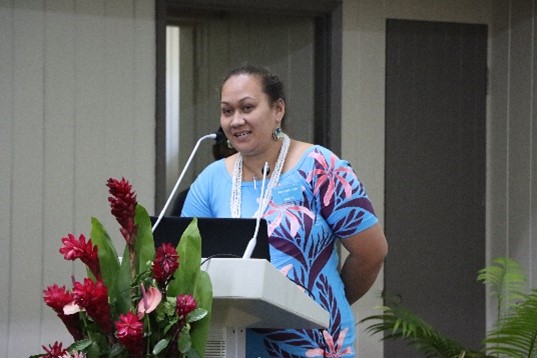 Samoa’s PILNA representative, Merenaite Afele, explained that “Most of the changes were to make the benchmarks more clear and also to make sure that the benchmarks would be useful for those who will be developing the PILNA items, to make the items more suitable to be able to capture the skills at each year level of the assessment”.
Samoa’s PILNA representative, Merenaite Afele, explained that “Most of the changes were to make the benchmarks more clear and also to make sure that the benchmarks would be useful for those who will be developing the PILNA items, to make the items more suitable to be able to capture the skills at each year level of the assessment”.
The newly established benchmarks indicate that literacy and numeracy are more than just reading, writing and mathematics which these have been traditionally associated with.
Torika Taoi, EQAP’s Team Leader of the Large-Scale Assessment (LSA) team, explained that “The understanding now is that literacy includes the capacity to read with understanding, write and critically appreciate various forms of communication, including spoken language, printed text and media”. She also explained that “Numeracy is not limited only to the ability to use numbers, use the four operations (addition, subtraction, multiplication and division) but numeracy also encompasses the ability to use mathematical understanding and skills to solve problems in everyday life”.
Similarly, new pilot benchmarks were established for the PALS programme at the regional workshop facilitated by the EQAP team, these benchmarks were established for the literacy, numeracy and science domains of the assessment. Similar to PILNA, the creation of the PALS benchmarks was supported by the ACER team.
The PALS covers a range of knowledge and skills deemed fundamental by the leaders of education in the Pacific that will lead Year 9 students to become active contributors to society and become lifelong learners.
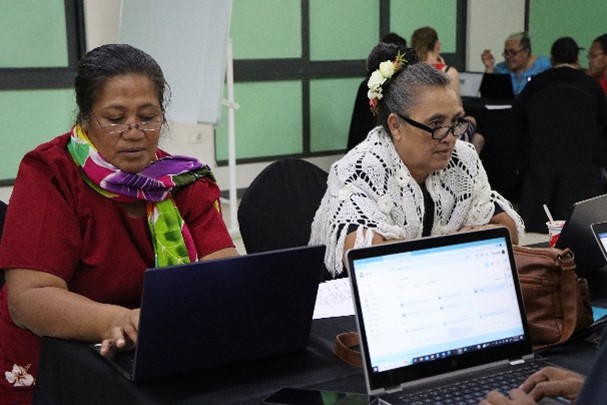 “Some of the components in the Science domain that piqued my interest were the different views and different approaches of the members in the group that were very much affected by our cultural contexts, beliefs, and values. But we are all connected by the blue Pacific Ocean. We have different views on how science should be assessed under PALS. However, it is interesting to see that we can come to some consensus to put the assessment together and have a regional benchmark through which we can all assess our students,” said Mona Lisa Bagadouwe, School Principal, Nauru.
“Some of the components in the Science domain that piqued my interest were the different views and different approaches of the members in the group that were very much affected by our cultural contexts, beliefs, and values. But we are all connected by the blue Pacific Ocean. We have different views on how science should be assessed under PALS. However, it is interesting to see that we can come to some consensus to put the assessment together and have a regional benchmark through which we can all assess our students,” said Mona Lisa Bagadouwe, School Principal, Nauru.
Similar to PILNA, the numeracy component of the PALS programme focuses on equipping students to develop strong number sense through the application of mathematical knowledge, skills, concepts and processes with positive values and attitudes. As for literacy, PALS aims to enable students to use critical and creative thinking when engaging in a variety of contexts and create meaning from a range of oral, written and visual texts for a variety of purposes.
The design and construction of benchmarks including strands such as Biology, Chemistry, Physics and Environmental Science is a new development in the Pacific brought about by the PALS that is being formulated. This component of the new PALS programme will empower students to engage more fully with the ever-changing and complex natural world around them by strengthening their scientific literacies, thus enabling them to effectively handle future challenges including those resulting from climate change.
Through the PALS programme, Pacific students will be given the opportunity to demonstrate their traditional and contemporary knowledge and skills in science. In addition, they would be using inquiry-driven methods of planning, designing, investigating and conducting activities within a variety of contexts and showing creativity, curiosity and analytical skills to identify, predict, observe, measure, recognise, conclude and communicate relevant findings with evidence using appropriate tools.
Gemma Escott, EQAP’s Education Assessment Specialist, highlighted that “The benchmarking process is important for the region as it not only brings the curriculum and assessment specialists from each country together, it enables a robust discussion around aspects of education most commonly valued across the region. The benchmarks give us our broad indicator for ensuring we target and measure as accurately as possible the learning outcomes we value the most”.
The PALS programme contributes to the monitoring of Sustainable Development Goal 4, particularly 4.1.1 which outlines the need to monitor achievement in reading and mathematics at key educational points. PILNA already serves as a key data collection point for the primary level and PALS will provide the data needed to monitor achievement in these outcomes at a lower secondary level.
At the regional level, the programme contributes to the Pacific Regional Education Framework (PacREF) as it outlines the need to explore what aspects of education are most important across the Pacific at the lower secondary level and develop tools to measure these educational outcomes.
The pilot of the PALS programme will be carried out in the fourth quarter of this year through a traditional pen and paper test as well as a practical test based on an authentic scenario relevant to the Pacific Islands.
